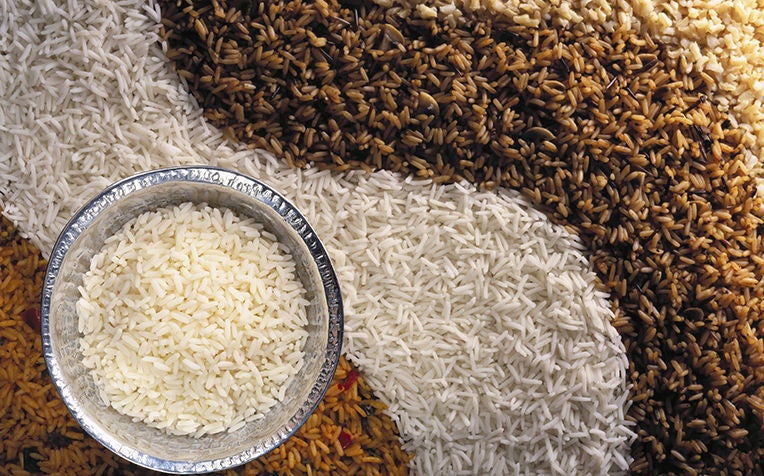
Rice is low in sodium, and almost fat-free.
Rice is a starchy cereal grain that is a staple food in Asia, including Singapore, where it is consumed with most meals. It is a complex carbohydrate and contains a variety of nutrients such as protein, fibre, vitamins and minerals.
There are many different types of rice available, from unpolished brown rice, which is the closest to its natural form, to polished white rice. There are also variations in the size of the rice grain, such as long- grain, medium-grain and short-grain.
Brown rice is the rice kernel with the husk removed. White rice is the rice kernel in which the husk, bran and endogerm have been removed. The most popular type of rice is white rice and the healthiest is brown rice. Brown rice, a whole grain, is increasingly gaining popularity due to its greater health benefits.
“Rice is naturally gluten-free, low in sodium and almost fat-free. The process of polishing the rice grain to increase its shelf-life strips it of many of its essential nutrients,” says Ms Peggy Tan, Dietitian, Tiong Bahru Community Health Centre.
Other varieties of rice, less popular than white rice and brown rice, include the following:
- Red rice
- Black rice
- Purple rice (also known as forbidden rice)
- Wild rice
“The type and amount of colour pigments (anthocyanins) in the rice bran determines the colour of the rice,” says Ms Peggy Tan.
Brown rice vs white rice Nutrition facts
White rice and brown rice contain similar amounts of calories, carbohydrates and protein. The differences between the two lie in their fibre content and the amounts of vitamins and minerals. Brown rice has three times the amount of fibre and twice the amount of iron than white rice. It also has greater amounts of B vitamins, (B1, B3, B6) and vitamin E, and minerals such as calcium, manganese, magnesium, selenium and phosphorous.
“B vitamins are lost when brown rice is polished to yield white rice. People living on white rice and little else are at risk of developing the disease beriberi, which is caused by a deficiency of thiamin,” says Ms Peggy Tan.
Brown rice also has a lower glycemic index compared to white rice, which means brown rice gets converted into sugar more slowly and releases energy steadily into the bloodstream, keeping you full longer.
Benefits of brown rice:
- Associated with a reduced risk of type 2 diabetes
- Heart-friendly and helps reduce LDL cholesterol (usually termed "bad" cholesterol)
- Facilitates healthy bowel movements
- Improves metabolism and promotes weight loss
- Brown rice has a nutty flavour and chewy texture, and takes longer to cook than white rice.
What's in long-grain, medium-grain and short-grain rice?
The different varieties of rice can be grouped into three broad categories depending on the length of the grain compared to the width: long-grain, medium-grain and short-grain.
Long-grain rice: This grain has the lowest glycemic index. It is about 3/8 inch (7 mm) in length and has a fluffy texture after cooking. It is commonly used in Asian rice dishes such as biryani.
“If you have to eat white rice, go for the long grain version,” says Ms Peggy Tan.
Medium-grain rice: This grain is wider and shorter than long-grain rice, and has a moist and sticky texture after cooking. It is not as commonly used in Asia as it is in the US.Medium-grain rice is ideal for risotto, puddings and other types of desserts.
Short-grain rice: This grain has a round appearance and has a starch component called amylopectin, which gives it a sticky texture when cooked. Short-grain rice absorbs less water than long-grain rice and is often associated with Japanese and Korean cuisines.
Read on to learn about how potatoes compare with rice.
Article contributed by the Tiong Bahru Community Health Centre.
Tiong Bahru Community Health Centre (CHC) strives to bring about convenient health services to the community. It is helmed by a team of experienced nurses and allied healthcare professionals to support and complement GPs in their management of patients with chronic conditions.
Main services include Digital Diabetic Retinopathy Photography, Diabetic Foot Screening, Nurse Counselling and Education, as well as Dietetic Services.
Ref: Q15
Contributed by

















 Get it on Google Play
Get it on Google Play